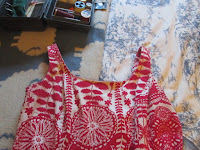When you picture a rich person, how are they dressed? Designer labels from head to toe? According to the Washington Post (gift link), Town & Country magazine, and the Style Theory channel on YouTube, that's a bit wide of the mark. There certainly are well-to-do folks who dress that way, but the really rich tend to go for "quiet luxury." Their clothing doesn't bear any obvious brand labels; in the words of O. Henry, it "properly proclaim[s] its value by substance alone and not by meretricious ornamentation." You'd have to look at it very closely to notice the details that make it so expensive: the luxe fabrics, the impeccable stitching, and crucially, the flawless fit. They often have garments altered, made to measure, or even custom made to fit them exactly.
So how do you get this look for less? The Style Theory video suggests starting with off-the-rack garments from mid-tier brands like Banana Republic or J. Crew, then getting them tailored for "an additional $20 or so" to give you that custom-fit look. But several comments on that video argue for my preferred approach: starting out with thrifted garments. In the first place, secondhand clothes from those same medium-priced brands will cost less than new ones; in the second place, they'll most likely be better made, as all but the highest of high-end clothing lines have cut back on quality in recent years to churn out clothing faster and more cheaply. You can take those secondhand clothes to the tailor and end up with a custom-fitted garment for the same price as you'd have paid for a lower-quality new garment straight off the rack. (This is also a handy strategy for those of us who have trouble getting a decent fit in new clothing. Rather than hunting all over for that elusive pair of pants that fits over the hips without gapping at the waist, we can just buy one that fits in the seat and have it taken in to close the gap.)
At that price, I wasn't sure this alteration would really qualify as an affordable luxury. So, before springing for it, I brought the dress back home and did a little investigation to see how hard it would be to shorten the straps myself. When I found a YouTube video showing a method that didn't require a sewing machine and looked well within my modest abilities as a seamstress, I decided to take the plunge.
First, I turned the dress inside out, put it on, pinned the straps up to the right length, and stitched them in place. Then, I added an extra step not shown in the video: I turned the dress right side out again and tried it on to make absolutely sure I had the shoulders adjusted correctly. I knew once I took the next step—cutting the fabric—there would be no going back, so I followed the old carpenter's rule: measure twice, cut once.
So this is my actual Treat for Today: an elegant summer dress that fits me perfectly and only cost me $19 plus half an hour of work. In fact, I'm so encouraged by this success that I might just take a crack at adding those pockets myself, too. But that looks like a job that requires the use of the sewing machine, so I'll probably want to practice my machine skills a bit first. (And yes, I realize the dress looks a bit silly worn with a winter hat and long johns, but give me a break, it's January.)







No comments:
Post a Comment